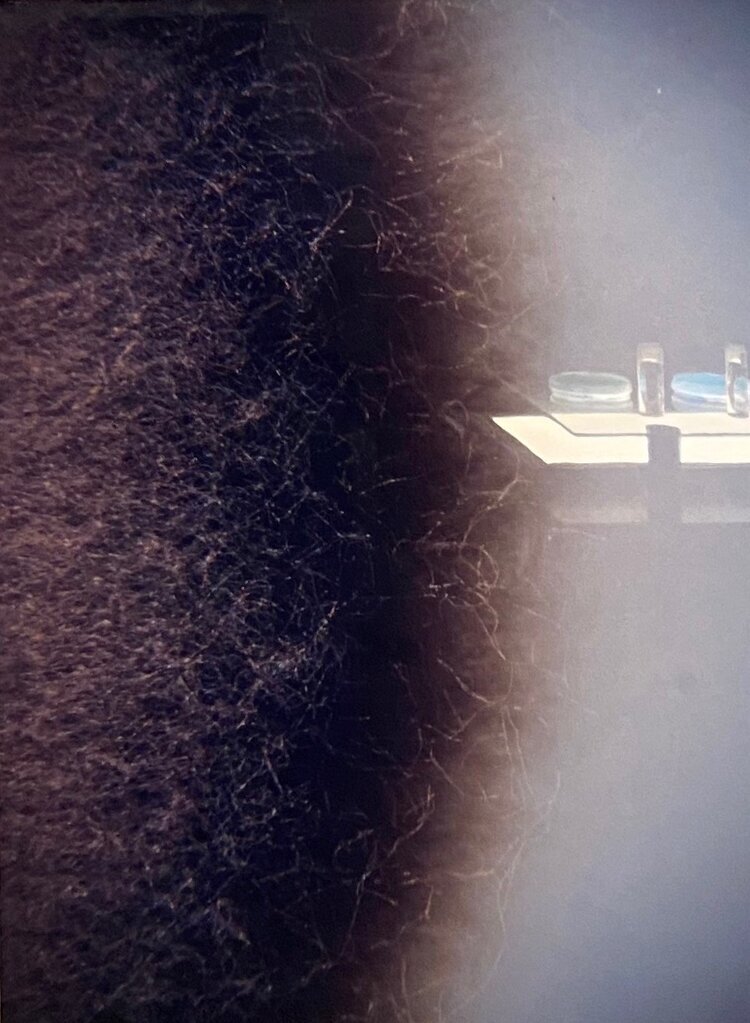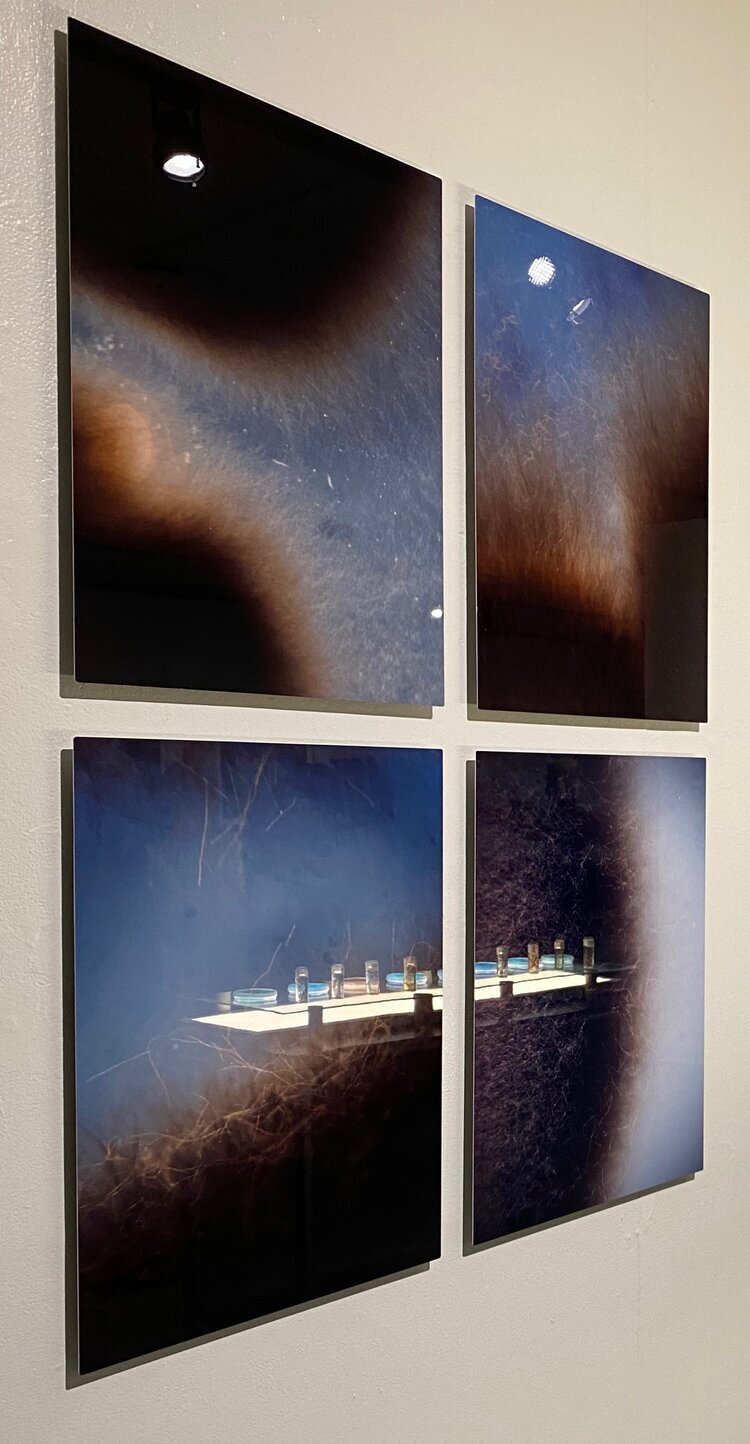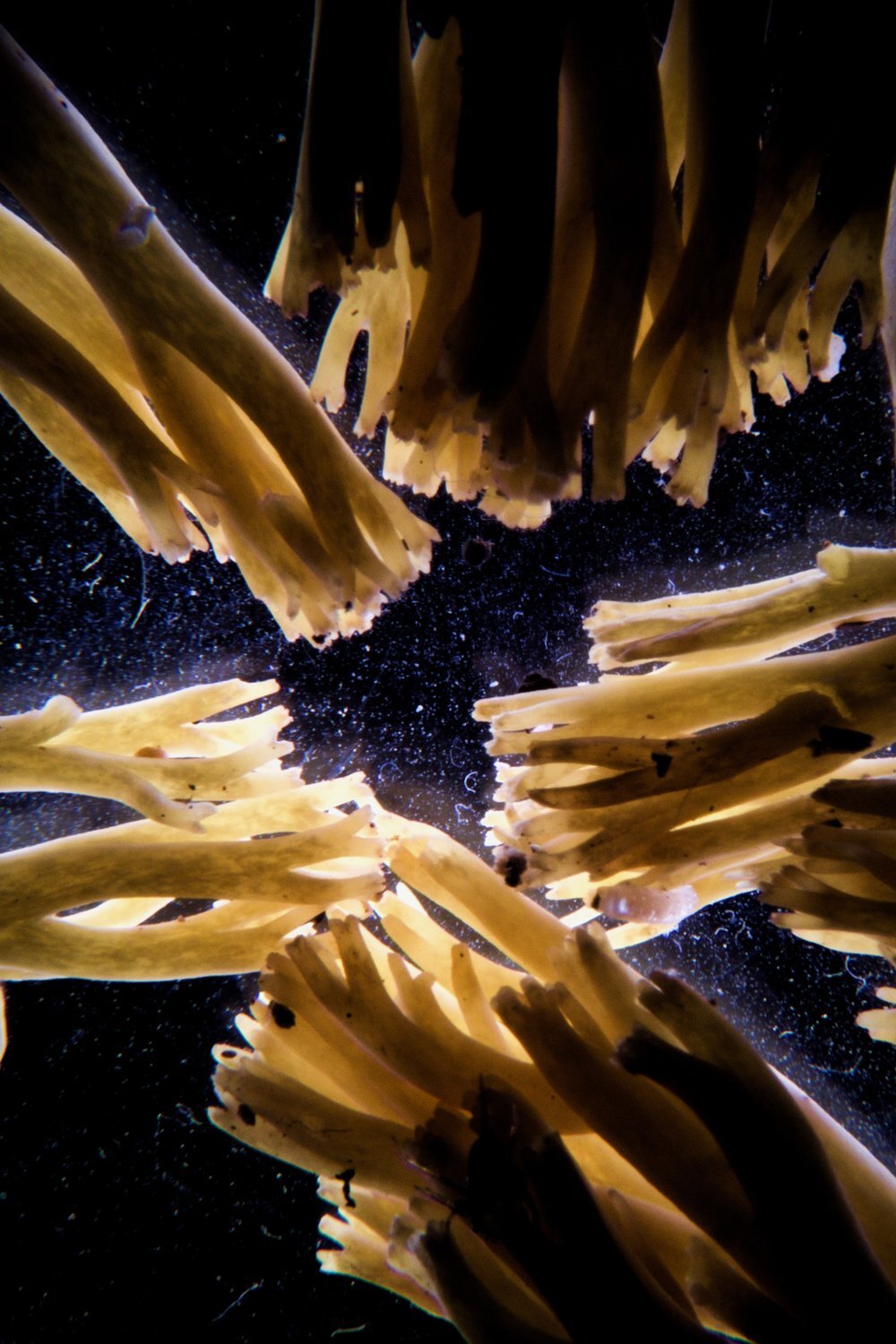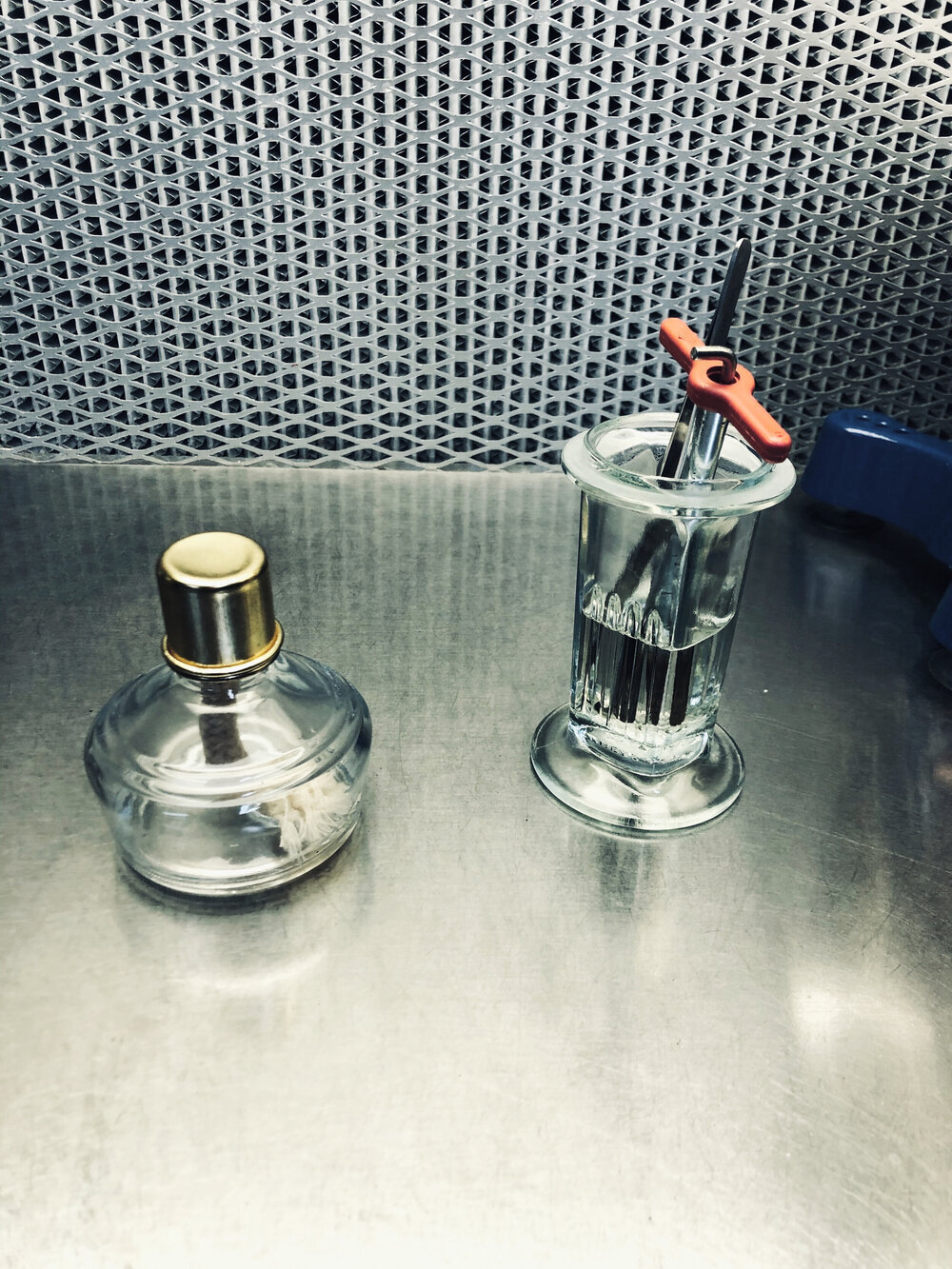





Living with Mycelia
My work as a researcher and Artist in Social Practice at the Environmental Resilience Institute started in the woods but eventually made its way to my studio and the Biology department at IU, where I had the opportunity to work with Distinguished Professor Roger Hangarter taking photographs of mycelium under the microscope in his lab and where I met Katie Beidler, a PhD candidate who studies how interactions between tree roots and soil fungi (mycorrhizal and saprotrophic) affect carbon and nutrient cycling in forests. Working in the lab has given me critical hands-on experience growing fungal mycelium. There are several stages to fungi and achieving the right conditions for the organism to propagate and fruit. The next stage of transferring the cultures to different substrates is to get the mycelium to spawn. In the lab under all the proper sterilization protocols, I would carefully take slices of mycelium and place them in jars filled with sterilized rye berry grain where the mycelium can propagate. The biolab opened up a new world for me and has made the essential hands-on experience inoculating fungi cultures in petri dishes another art and scientific moment come to life.








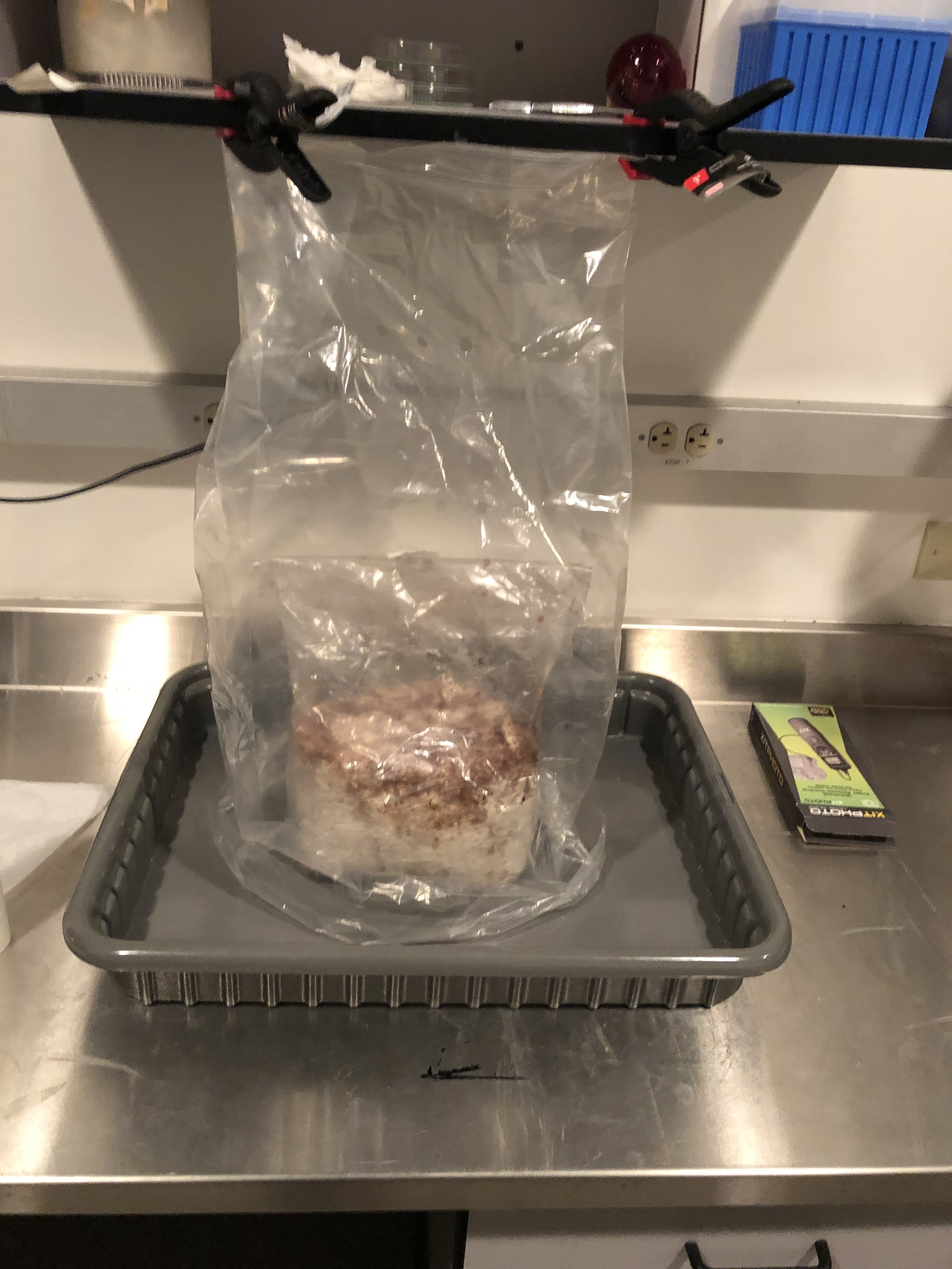





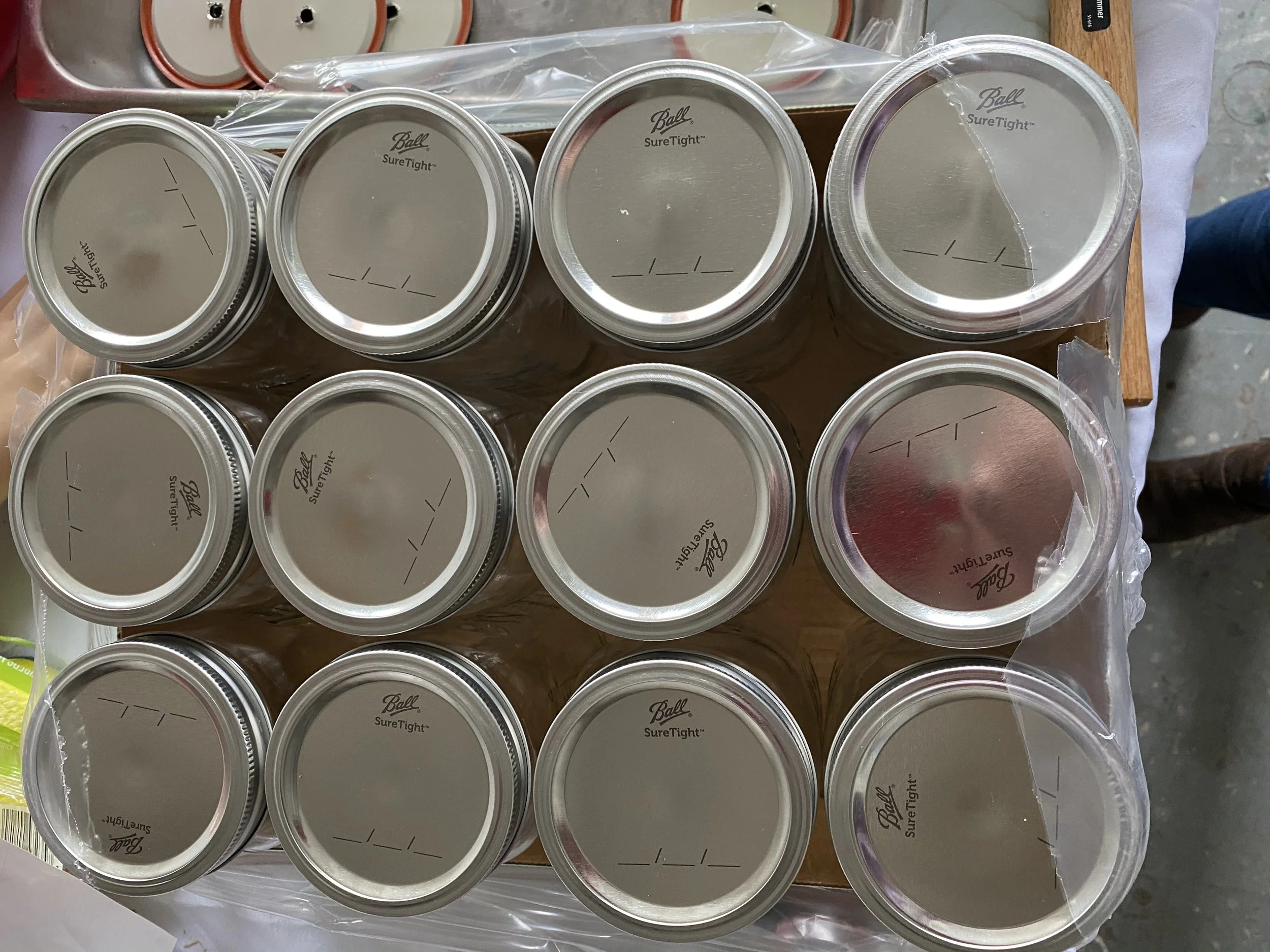
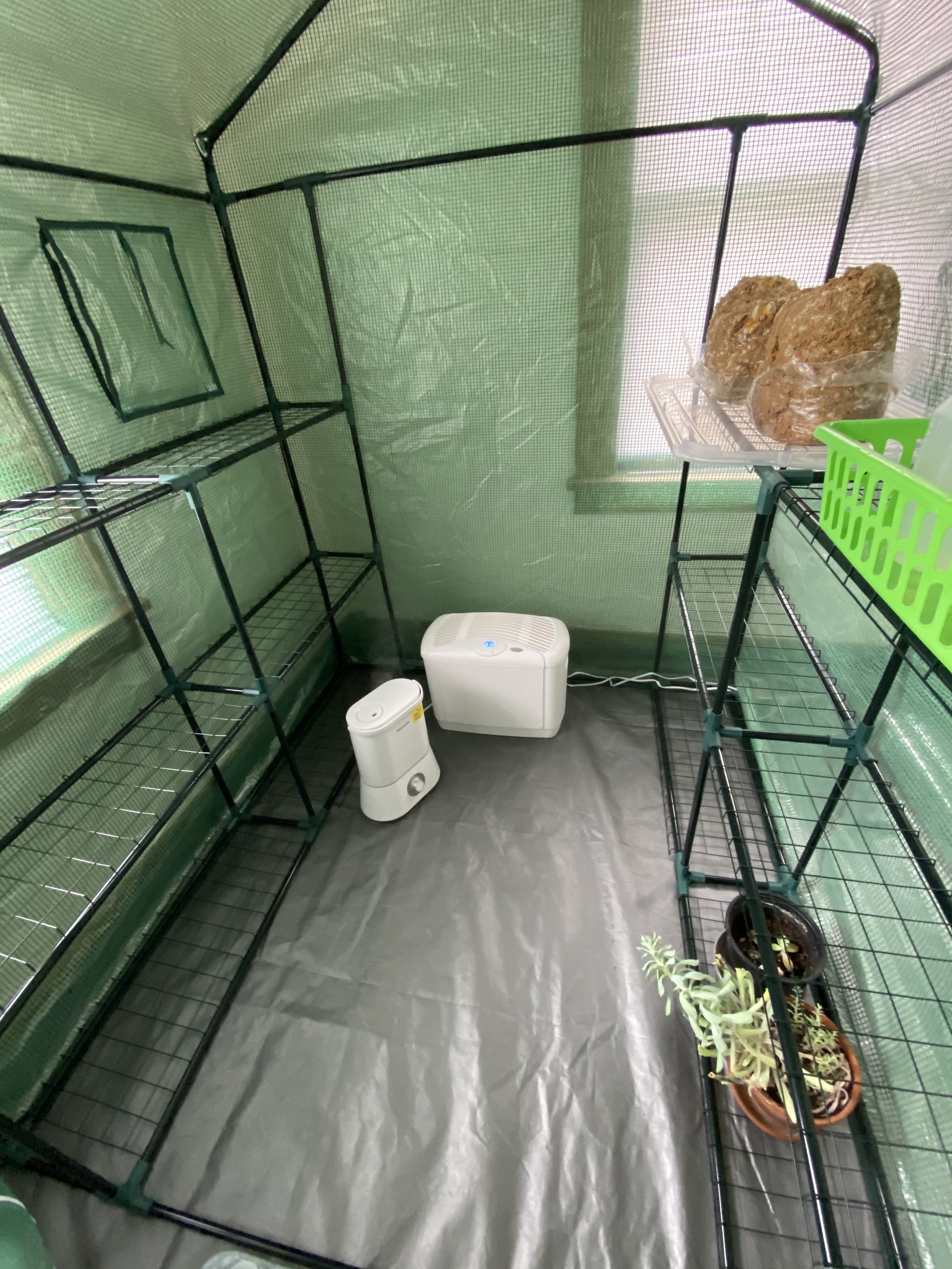


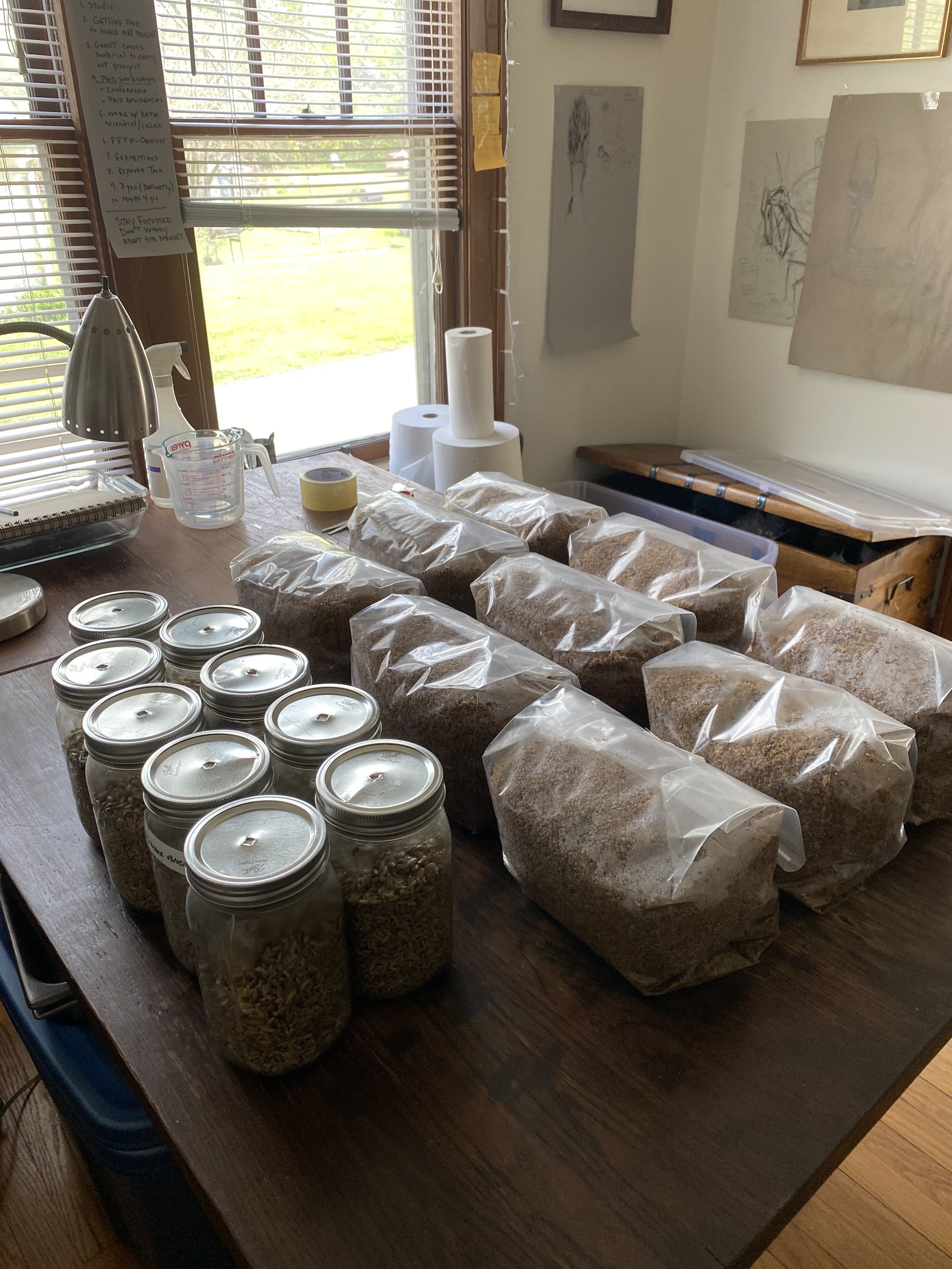

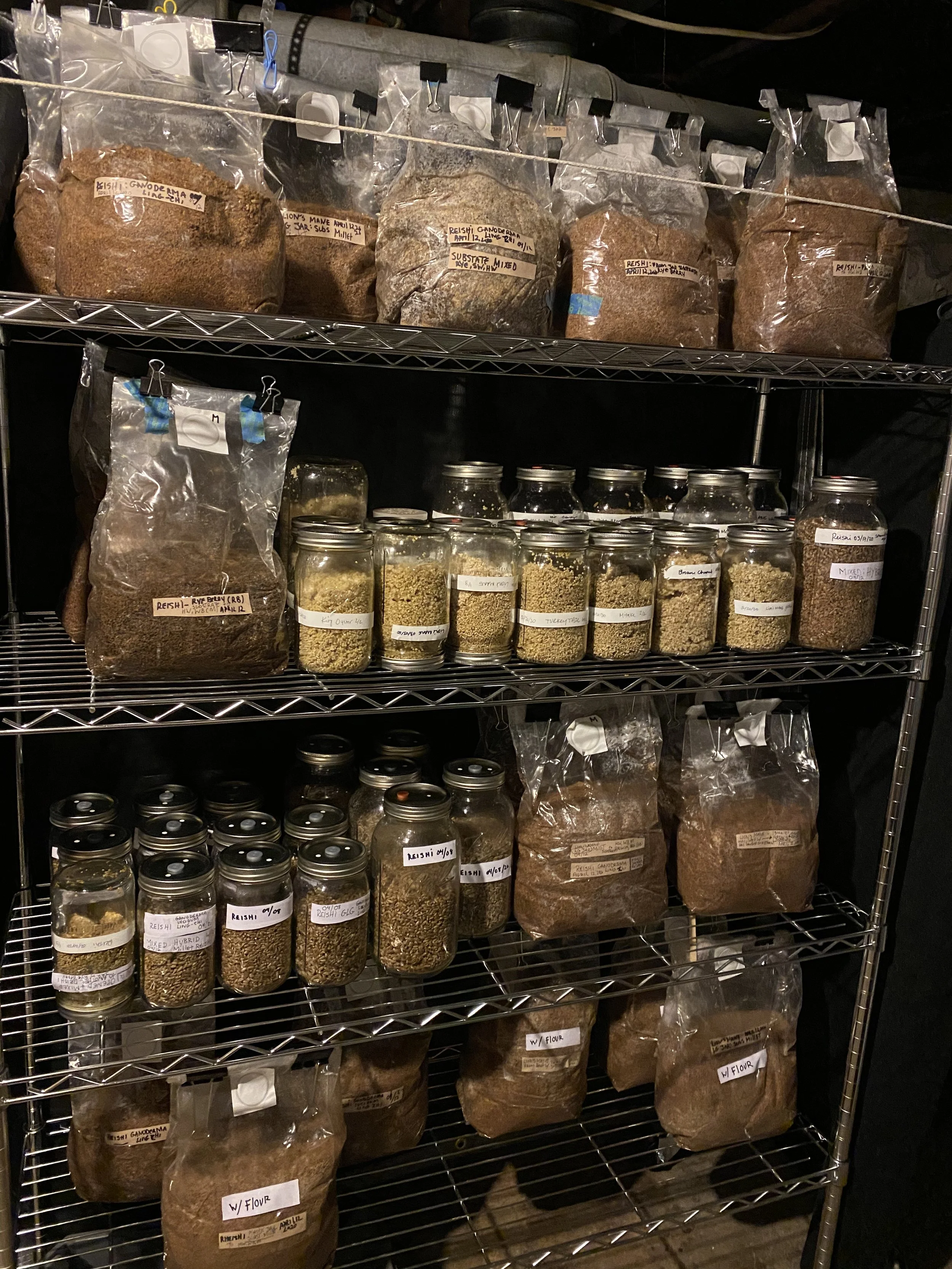


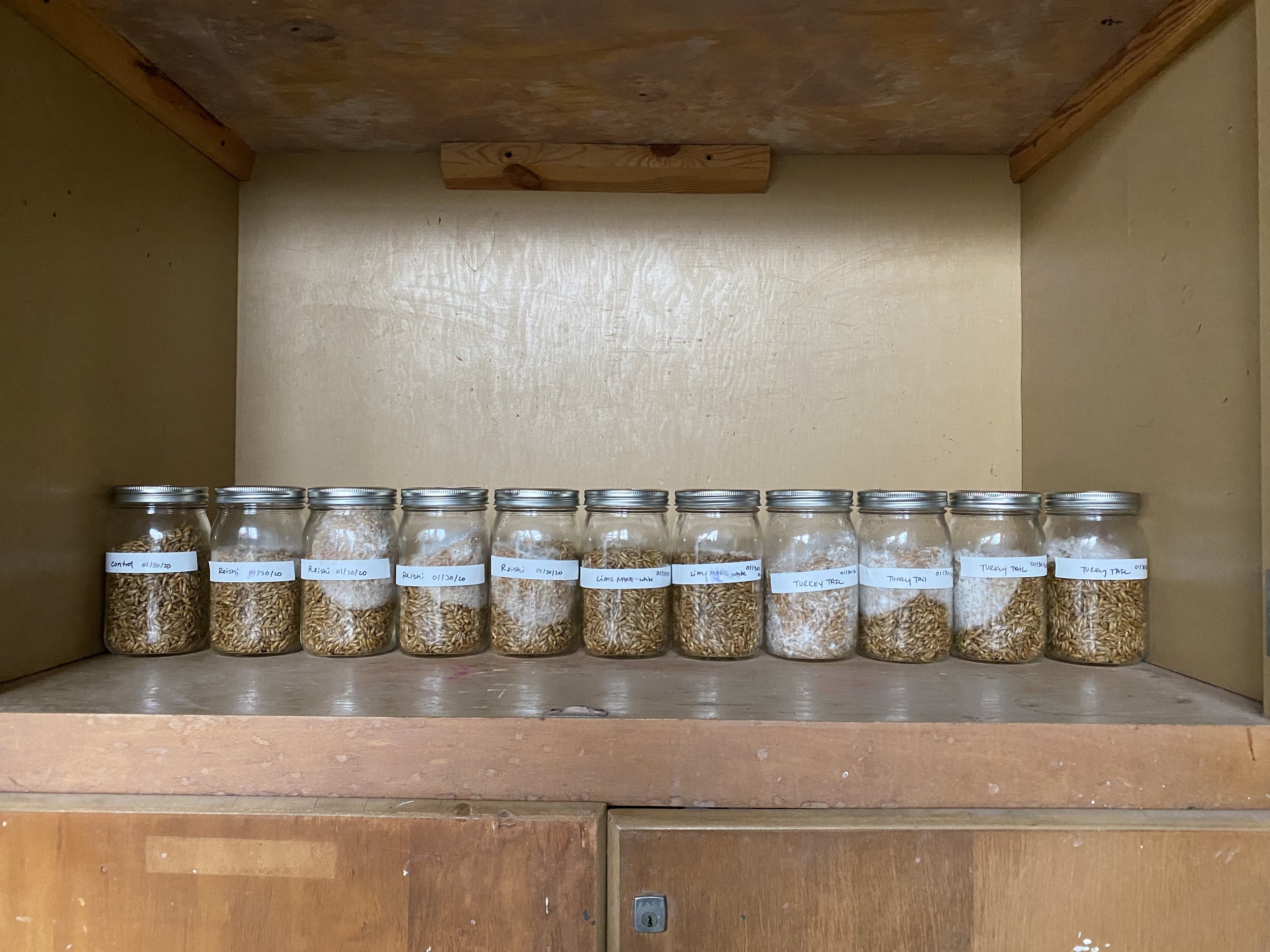





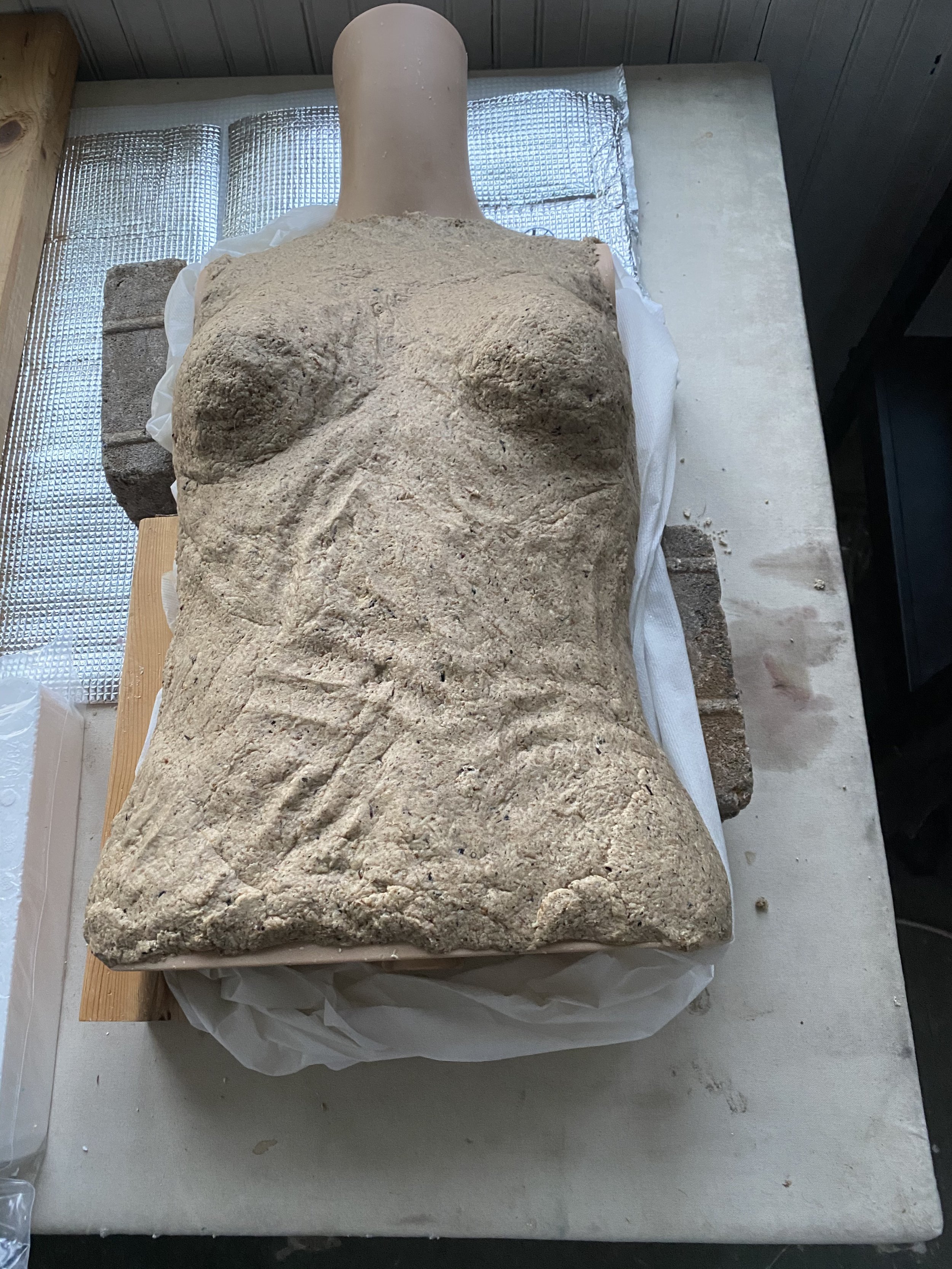




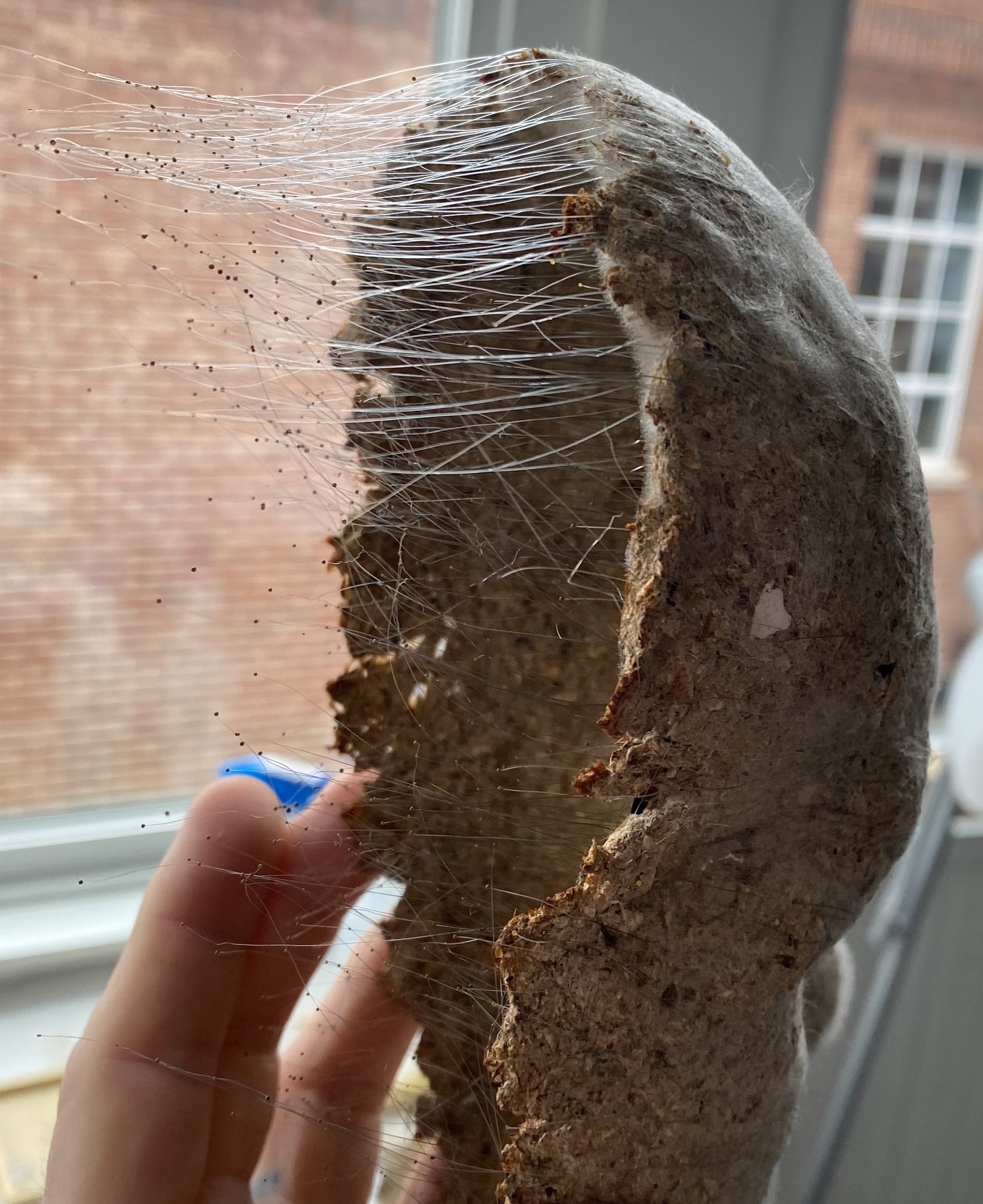


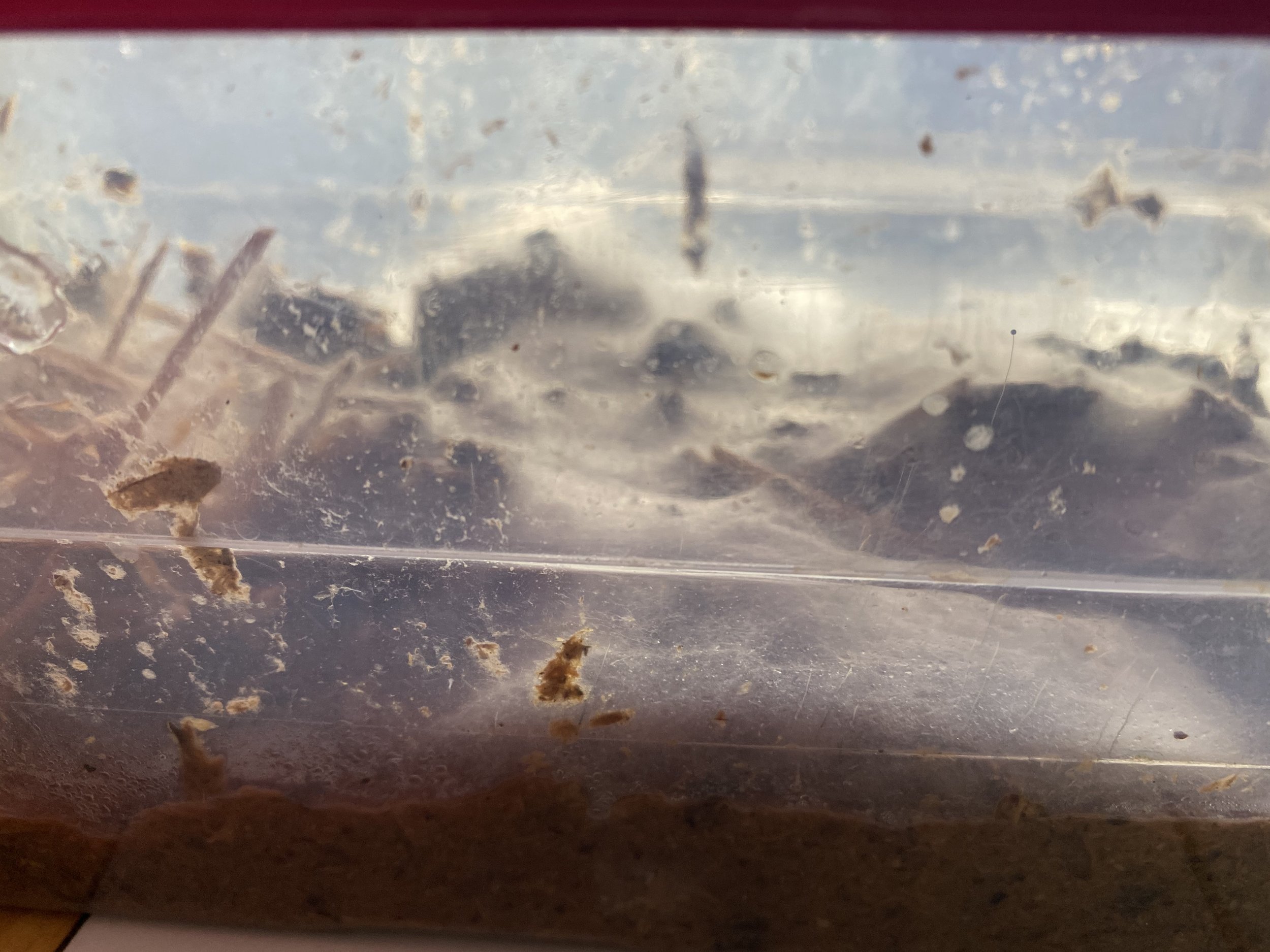

Living with Mycelia
My relationship with fungi has changed how I’ve come to know and appreciate the forests around me. Living with Mycelia has five parts: observation, research, science, experimenting and creativity. All of these parts have led me
to immerse myself in the life of the scientific kingdom of fungi. I see the entire experience of working with fungi as the artwork itself, since it has created a multifaceted and multilayered world of science and art. I eventually began living with mycelia by bringing it home, learning to culture and maneuvering them into new forms and material shapes.
Learning how to cultivate mycelium expanded the inventory of the spawning mushroom I would work with at home for the next four months during COVID 19. The next stage was moving the mycelium to another environment to continue their propagating--a mix of hardwood, straw, wood chips and more grain. This substrate combination offers the mycelium the perfect environment of moisture, water, food and air to colonize and eventually begin forming fruiting bodies. The stages from petri dishes to fruiting are all happening within the temporality of the organism. If the conditions are satisfactory and healthy in three months, I’ll have fruiting bodies. From this point I wanted to start creating interesting shapes and forms out of the mycelium as art pieces. Through my experimentation and eventual success growing fungi. I embarked on the creative part of my work and began experimenting with growing Reishi (Ganoderma Lucidum) in totes to see what I could make from them, some of the results are seen in the pieces hanging on the wall. One of my motivations of working with fungi was to grow my own biodegradable artwork out of mushrooms and mycelium. To my delight, I not only learned how to make bioart with fungi. It also changed my life by developing a new and greater awareness and appreciation for the amazing role the fungal kingdom plays in all of our ecosystems.
